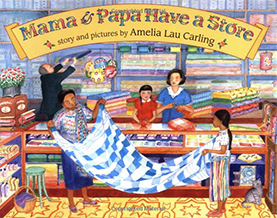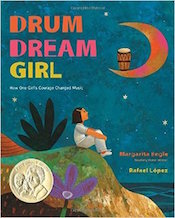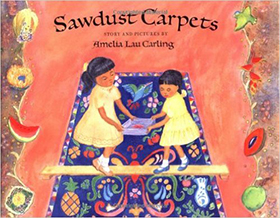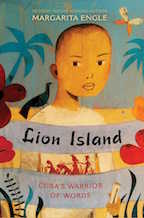.
My name is Lili.
I am Guatemalan.
I am Chinese.
I live in Los Angeles.
I am Latina.
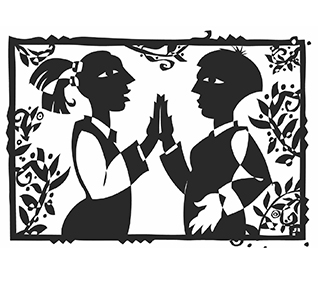
.
My name is Michiko.
I am Peruvian.
I am Japanese, a sansei
I live in Los Angeles.
I am Latina.
Click to see:
> Questions to initiate and guide the Creative Reading Dialogue
> Activities students can do individually or in groups
Questions to Initiate and Guide the Creative Reading Dialogue
Descriptive Phase
Lili’s background is Chinese. Michiko’s background is Japanese. These are two very different cultures. Why was it so easy for Michiko and Lili to become friends?
What makes Michiko proud about being Peruvian and Japanese?
Why does she want to learn to speak more languages?
Personal Interpretive Phase
Do you have a good friend? Was it easy for you to become good friends? What made it easy?
Have you ever felt that other people made assumptions about you before they knew you well? Have you ever needed to explain to other people where you are from?
Critical/Multicultural/Anti-Bias Phase
Unfortunately, many people think that all Asian people, or all Native American people, or all Latino people, or all African-American people are the same. Why is this dangerous?
Knowing how to speak well more than one language can be an enormous richness. What are some of the advantages of being fully bilingual-biliterate? What are some of the advantages of being multilingual?
Creative/ Transformative Phase
How can we help others understand that each person is an individual and should not be judged by his or her appearance or background?
How can you strengthened the language or languages you speak to become a more efficient speaker, reader, and writer?
What can you do to learn new languages?
Activities Students Can Do Individually or in Groups
Have students, working in teams, write the biography of a famous Latino with Chinese or Japanese ancestry. Encourage them to find interesting ways of presenting the biography using media.
Invite students to investigate what other groups of people have immigrated to Latin America and become part of the population. Some of their descendants may be today Latinos with mixed heritage.
—For example, large numbers of Jewish [non-Sephardic] people have emigrated to Argentina since the 19th century, many more immigrated to multiple Latin American countries as a consequence of World War II. Some were originally from Russia, Ukraine, Poland and brought with them their history and culture.
—While perhaps in not the same numbers, there have been immigrants to Latin America from Turkey, Iran, India, and other countries.
—Students could prepare a simple set of questions and ask relatives, neighbors, and friends whether they know any Latinos with diverse heritage.
Have students brainstorm what would be the sentences, 6 or 10, that they would like to learn in a language they have never spoken. Have them find speakers of other languages willing to visit the class and teach those sentences.
The sentences should reflect the students own interests, for example: What do you do on week-ends? Do you want to be my friend? What is your favorite sport?
Related Books Grades 2-4
Related Books Grades 4-8

